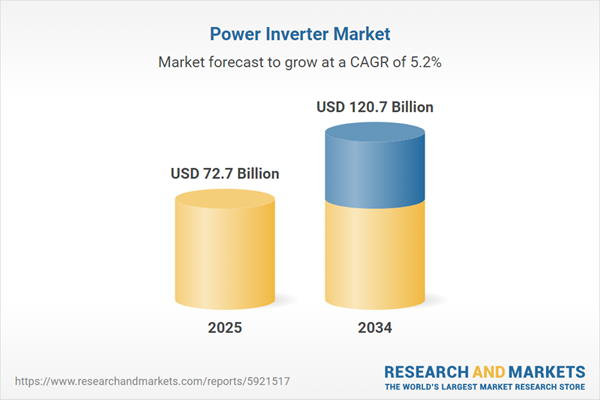The global power inverter market is being dominated by the Asia-Pacific region owing to the increased establishment of multinational companies in the region, due to low manufacturing costs and readily available cheap labour.
There are currently a variety of favourable factors driving the power inverter market. The industry growth is also boosted by technological innovations that have led to portable inverters that could be used to charge cell phones and tablets while commuting. Based on rating, 100KW to 495KW accounts for the largest share of the global power inverter market. On the basis of the application, the report finds that motor drives account for the highest profit margins. Due to the high reliance on electronic devices, the market for motor drives is on the rise throughout the globe. The utilities sector, meanwhile, dominates the end-use sector.
Market Segmentation
Power inverter refers to an electronic system that converts direct current (DC) from solar panels, batteries, or high voltage DC transmission lines to alternating current (AC). It is used to run machines, equipment, as well as other residential and commercial electrical appliances. Unlike traditional generators, the inverter is usually smaller, lighter, and more energy-saving. Throughout the years, they have gained popularity by providing a highly efficient and reliable power source, offering low operating costs and reducing the inconvenience of switching.On the basis of rating, the power inverter market can be divided into:
- < 5KW
- 5KW to 95KW
- 100KW to 495KW
- Above 500KW
It finds wide application in the following sectors:
- Motor Drives
- UPS
- Rail Traction
- Wind Turbines
- Electric Vehicles/Hybrid Electric Vehicles (EVs/HEVs)
- Solar PVs
- Others
It finds its end-uses in the following sectors:
- Utilities
- Residential
- Commercial and Industrial
- Automotive and Transportation
On the basis of region, the power inverter market can be divided into:
- North America
- Europe
- Asia-Pacific
- Latin America
- Middle East and Africa
Market Analysis
With growing electrification as well as rapid urbanisation, most of the population is now dependent on electronic appliances and devices, including air conditioners, televisions, computers, and refrigerators, among others. It has resulted in a major demand for power inverters to provide an uninterrupted electricity source and an effective backup solution in the case of emergencies. In addition, inverters generate zero emissions while generating energy and are also substantially quieter in operation than standard generators. The manufacturers in the industry are making investments in R&D activities to develop new technologies that will improve the characteristics associated with the use of these inverters.Competitive Landscape
The report gives a detailed analysis of the following key players in the global power inverter market, covering their competitive landscape, capacity, and latest developments like mergers, acquisitions, and investments, expansions of capacity, and plant turnarounds:- Huawei Technologies Co., Ltd.
- SMA Solar Technology AG
- Tabuchi Electric Co.,Ltd.
- OMRON Corporation
- SolarEdge Technologies Inc.
- Others
Power Inverter Market Report Snapshots
Power Inverter Companies
Table of Contents
Companies Mentioned
The key companies featured in this Power Inverter market report include:- Huawei Technologies Co., Ltd.
- SMA Solar Technology AG
- Tabuchi Electric Co.,Ltd.
- OMRON Corporation
- SolarEdge Technologies Inc.
Table Information
| Report Attribute | Details |
|---|---|
| No. of Pages | 152 |
| Published | August 2025 |
| Forecast Period | 2025 - 2034 |
| Estimated Market Value ( USD | $ 72.7 Billion |
| Forecasted Market Value ( USD | $ 120.7 Billion |
| Compound Annual Growth Rate | 5.2% |
| Regions Covered | Global |
| No. of Companies Mentioned | 6 |









